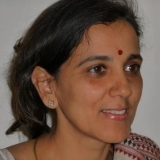Improving learning outcomes through information provision: Experimental evidence from Indian villages
We study how information to parents and schools on the performance of primary school children can improve learning outcomes in an environment where public and private schools co-exist. Contiguous village councils in the Indian state of Rajasthan are randomly assigned to either a control or one of four treatment groups in which student report cards on curriculum-based tests are provided to schools, parents or both. We find no changes in academic performance in public schools.





